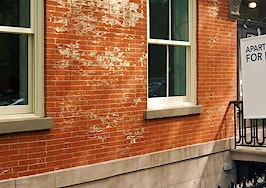Supervisors of the unincorporated parts of sprawling Los Angeles County have set a Nov. 12 date for what likely will be the final vote on one of the most stringent rent-control laws in the nation.
The proposed law would limit most annual hikes on roughly 43,500 rental units to the current rate of inflation and would make it more difficult for landlords to evict their existing tenants.
Beverly Hills, the city of Los Angeles, Santa Monica and West Hollywood already have permanent rent control measures, according to The Los Angeles Times.
The plan, approved by a 5-0 vote, came within 24 hours of passage of a new statewide law that would limit most annual rent increases over the next decade to 5 percent plus inflation, and also would make it tougher for landlords to evict tenants without cause.
Gov. Gavin Newsom, who brokered the deal that lead to the statewide plan, immediately vowed to sign it into law.
The statewide proposal specifically allows individual cities and counties to pass even stricter rent-control measures of their own, meaning that landlord groups and others who oppose the Los Angeles County proposal would have a difficult time successfully challenging it in court.
Law aims to stop rent gouging
Supporters of the Los Angeles plan say that linking most rent increases to the current inflation rate in the unincorporated parts of the 4,057 square-mile county would protect tenants from hikes that have doubled — or even tripled — their monthly rent in some cases and would also help to stem the region’s growing homeless problem by keeping more low-income renters in their homes.
“We see this as homelessness prevention, and we want to take action to protect renters,” said Supervisor Sheila Kuehl at a news conference before the vote. Kuehl represents L.A.’s 3rd District, a massive stretch that encompasses 431 square miles and nearly two million people. The region stretches from the coast to miles inland and includes Malibu, Santa Monica, Beverly Hills and Hollywood. Kuehl aggressively pushed the package.
If inflation unexpectedly soars, rent hikes would still be limited to 8 percent. If the Consumer Price Index instead stays in its recent 1 percent to 3-percent range, the maximum increase would be capped at 3 percent.
But if the CPI falls into negative territory, many tenants couldn’t legally receive a rent increase at all.
The new package also permanently codifies a year-old guarantee that landlords can only evict a tenant for “just cause,” such as failure to pay rent, and requires relocation payments to tenants who are forced out of their homes because the property owner must make major repairs to the unit and there is no other apartment in the same building to accommodate a relocation.
Though the California Apartment Association dropped its earlier opposition to the statewide law that would allow landlords to levy heftier rent increases, they strongly opposed L.A.’s plan.
The CAA believes that the local Los Angeles proposal would discourage new apartment construction, driving rents for existing apartments even higher.
A flawed law?
The group also argues the measure may force some rental-income investors who otherwise wouldn’t raise rates to do it anyway so they could build a reserve to pay for large expenses in the future, such as a roof that might need to be replaced or a plumbing system that could require a significant overhaul.
Landlords “can’t fall behind” on their rental income or reserves, Fred Sutton, a CAA executive, told the supervisors during the public meeting before the vote. “In the long run, you will make things more expensive.”
Even supporters of the measure admit it has shortcomings.
For starters, it only covers multi-family units that were built on or before Feb. 1, 1995. Newer units would be exempt, which could prompt property investors to tear down older buildings and rebuild to skirt the rent-control ordinance.
Rent control supporters also worry that a provision in the new ordinance would make it too easy for landlords to skirt the law and raise rents higher than the CPI if they can claim that their building needs major repairs or maintenance, allowing them to pass-along the cost to existing tenants and then reaping the profits of that work for themselves when the property is later sold.
Los Angeles County has had a weaker law in place since last year, a temporary measure that limited most rent-hikes to 3 percent until the Board of Supervisors could derive a more permanent plan.
Though the new program won’t be voted upon until mid-November, the supervisors’ 5-0 vote in favor of the plan suggests it will sail through to approval.
Supervisors often draft measures and order their staff to work out details, but their final vote is usually a foregone conclusion.
David W. Myers, a 40-year veteran of the journalism industry, is author of the nationally syndicated About Real Estate column for King Features Syndicate.










